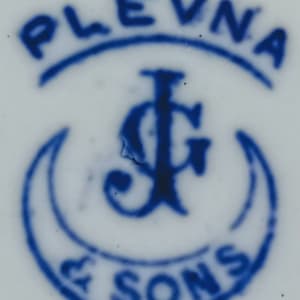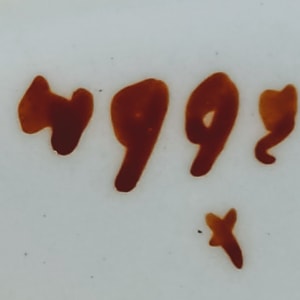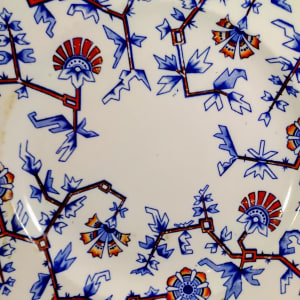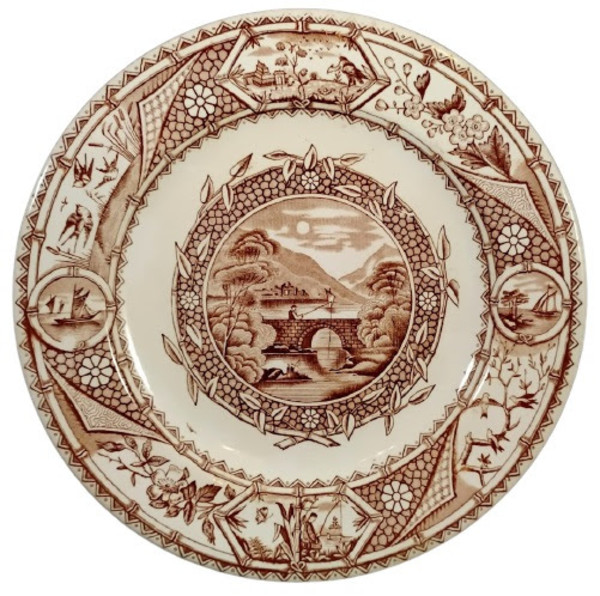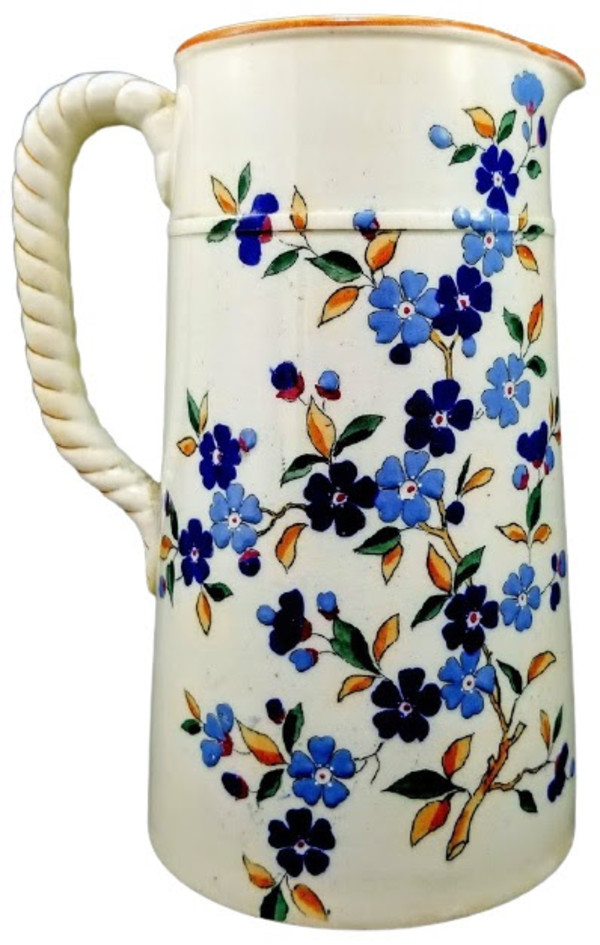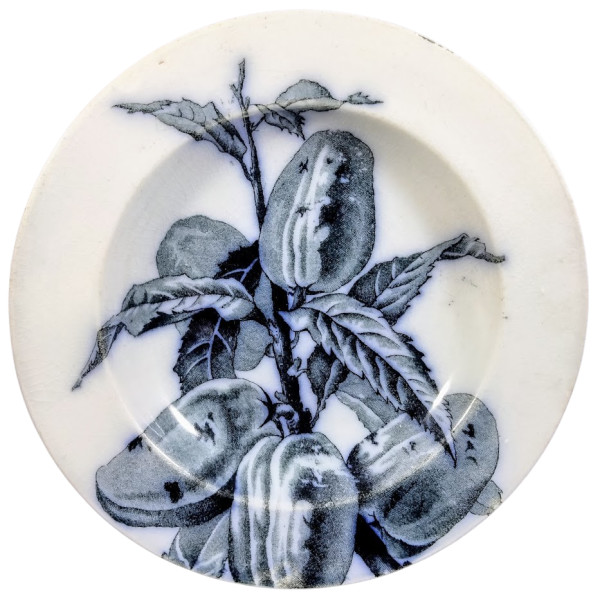Plevna
- Earthenware
-
10 x 10 in
(25.4 x 25.4 cm)
- George Jones & Sons
-
Not For Sale
Plate, 10 inches diameter. Blue transfer with polychrome clobbering. Printed and impressed maker's marks for George Jones & Sons. The registry diamond dates the registration of this pattern to 7 June 1878. The pattern name "Plevna" could be a reference to the Siege of Plevna in Bulgaria which had taken place the year before this pattern was registered as part of the Russo-Turkish War (1877-1878). Quite incongruently, this pattern features a series of highly stylized and geometric flowers and leaves on stems radiating inward from the rim of the plate. This pattern was given the patent no. 322309 and was used on toilet ware. It has been seen in two different multicolor versions.
At the age of 14 George Jones started a seven-year apprenticeship with Minton. After completion in 1844 he worked as a traveling salesman for Wedgwood. By 1850 George had established himself as a successful pottery merchant and by 1856 he had opened a pottery showroom in Glebe Street, Stoke. George started manufacturing around 1861 at the Bridge Works, Stoke, as George Jones & Co. In 1864 he purchased land from Colin Minton Campbell and in 1865 the company moved to the newly built factory - the Trent Potteries. Production of majolica ware started in 1865. From 1872 china production was started. By 1873 the two eldest sons, Frank Ralph Jones and George Henry Jones became partners in the business which was renamed George Jones & Sons. 'Crescent' was registered as a trademark for the new company. At this time the business had 590 employees. In 1894 the business was incorporated as George Jones and Sons Ltd. George Jones died in 1893 and the business continued under the name 'George Jones & Sons.' Around 1907 the works were renamed 'Crescent Potteries.'
- Subject Matter: Aesthetic (Floral & Botanical)
- Created: Rd. 7 June 1878
- Collections: Aesthetic Transferware, George Jones & Sons


